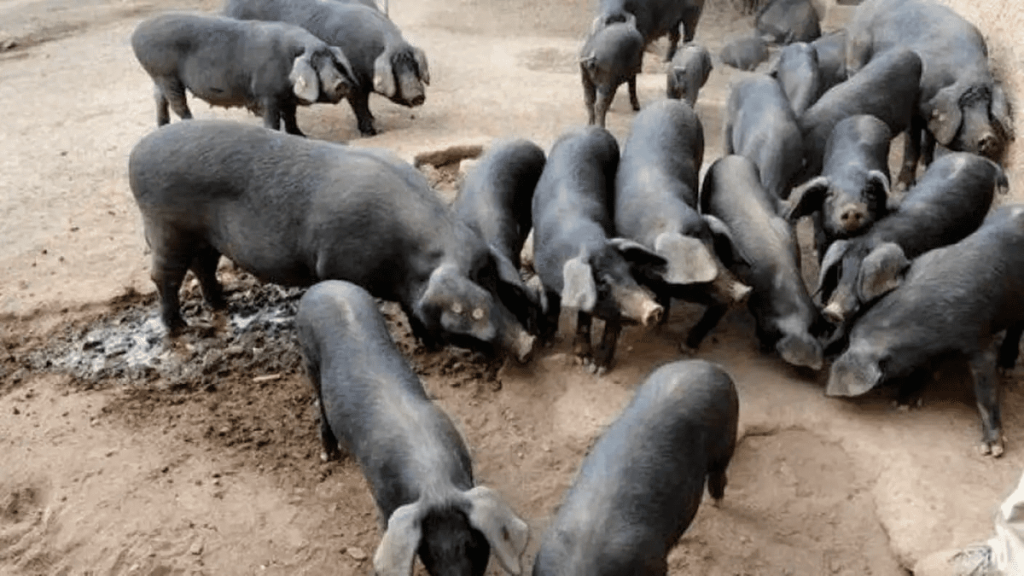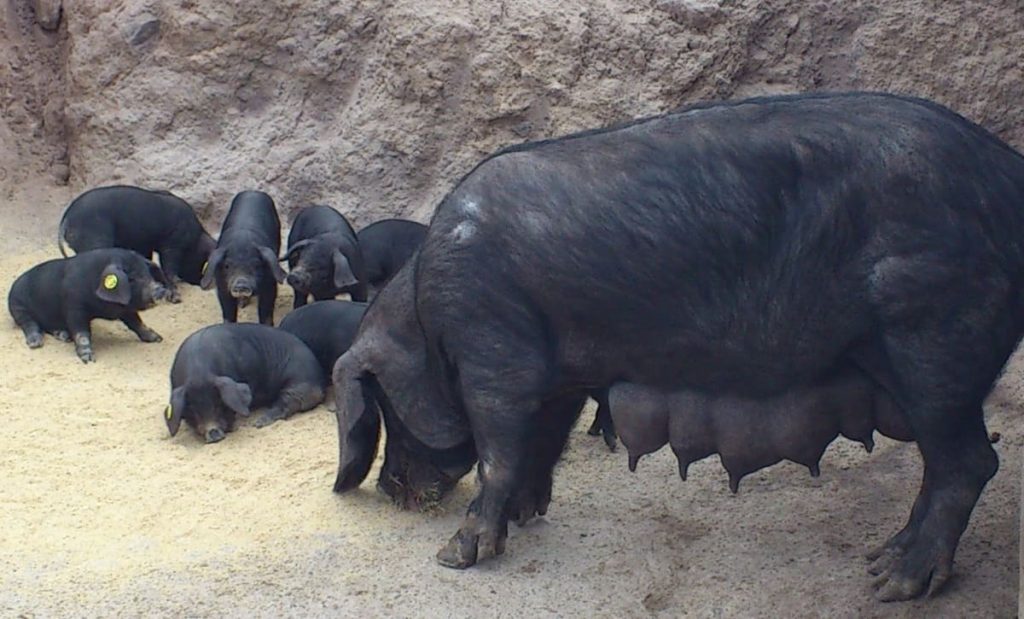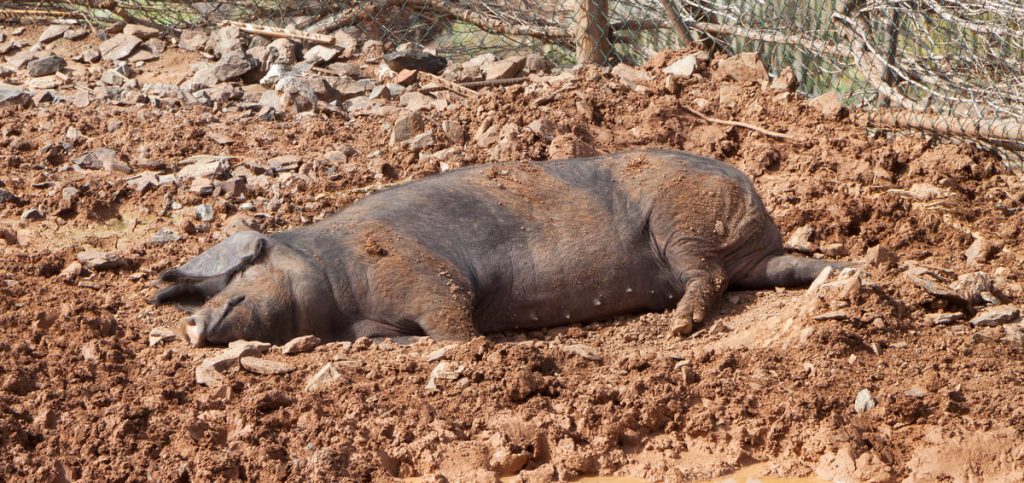The cochino canario or cochino negro is a breed of pig found in the Canary Islands. It is robust, of medium size, docile character and black hair, as its name indicates. The products derived from it are highly appreciated in the Canary Archipelago. Currently, this breed is in the process of recovery.
Description of the canary pig
The canary pig is a robust pig that has the average weight of the species, about 130 to 160 kilos and, in addition, it has an ultra-concave profile, that is, it is more sunken in the center and has folds. It has a scaly skin, with numerous strong and long bristles all over the body. Of course, it is black in color and some specimens may show spots on the end parts of the limbs, on the forehead or on the belly.

It has a rather small and short head, with marked wrinkles that can even cover the eyelids and its ears are especially long and drooping, reaching the end of the muzzle. The canary pig has a considerable dewlap on the neck, however this is proportionate. It has a slightly pronounced chest and the line of the back is quite straight, although it decreases at the end, at the back of the animal. Its legs are short and thin. As for differences between the sexes, females have approximately 6 pairs of breasts and males have testicles that are scarcely exposed. On the other hand, females usually give birth twice a year and have an average of twelve offspring per female per year.
Presence and history of this breed in the Canary Islands
The Canary Island pig has been present in the Canary Islands since the time of the aborigines. They used the meat and lard for food, the skin for clothing and the bones as tools and ornaments. The oldest remains of the Canary Island pig have been found on the island of La Palma. However, they are present in most archaeological sites with material dating back less than 2500 years.
The origins of this breed have not yet been determined. However, taking into account the geographical isolation and the volcanic nature of the Archipelago, everything suggests its continental origin, most probably linked to the arrival of man. At the beginning, this breed probably came from North Africa, which in turn was of Asian origin and from the eastern part of the Mediterranean. But the breed we know today has undergone several crosses over the centuries. These crosses have been with breeds from the Iberian Peninsula as well as with other British areas.

With the development of industrialization, this breed was on the verge of extinction. But the Cabildo Insular de La Palma intervened and carried out the protection of a nucleus of population on that island from which all the animals that exist today descend. In the 1980s, the Public Administration began to establish policies for the multiplication of these pigs, which were then ceded, either females or pairs, to farmers. This has contributed to the current situation, undoubtedly much more favorable than in the past, but still considered endangered.
For this reason, the Canary Island Pig is included in the Official Catalog of Livestock Breeds of Spain as a breed of special protection. Since 2001, the cochino canario or cochino negro has a herd book regulation. This promotes the preservation of its racial standard and minimization of inbreeding.
Distribution of the black pig in the islands
This breed is very well adapted to the environment and climate of the Canary Islands, in fact it is present throughout the archipelago. It has a greater presence on the islands of Tenerife, Gran Canaria and La Palma. The 2013 census data spoke of a population of 412 females, of which 405 are breeders, and 100 males, of which 65 are breeders. In total 512 black pigs distributed in 66 farms in the Autonomous Community of the Canary Islands.

Gran Canaria is home to the only three farmers who hold the "Gran Canaria Calidad" Guarantee Mark offered by the Cabildo de Gran Canaria. This requests a special breeding treatment in these three farms in order to obtain a meat that competes with that of the Ibérico. On the other hand, in the rest of the islands it is only found in a testimonial way, frequently hybridized with other breeds.
The meat of the Canarian pig is highly valued by the Canary Islanders, who appreciate all the products. Especially famous are the chicharrones, fried pork rinds breaded in gofio, but also for the preparation of the Canarian chorizo.
If you are interested in the world of the products elaborated in the Canary Islands and its gastronomy and you want to know more, we leave you below the link to our section of Gastronomy section.
Photos: Canarias 7 and Tourism and Culture of Gran Canaria



